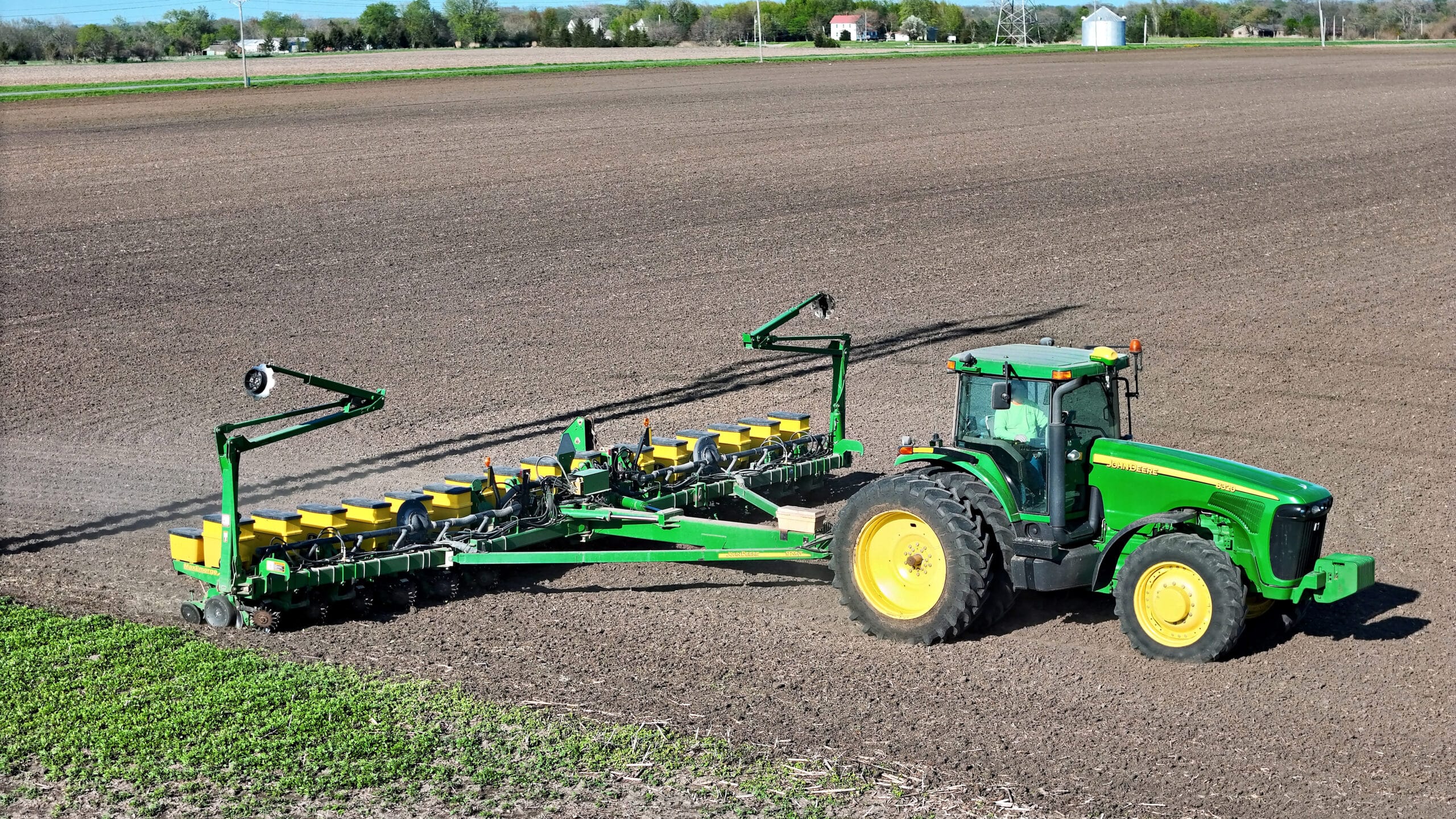Science
Farmers Set to Benefit from New Nontoxic Lubricant Research

Modern agriculture relies heavily on machinery, particularly during the seeding process. However, the lubricants used in these machines are often either talc or microplastics, which can adversely affect both human health and the environment. Recent research from NC State University presents a promising alternative: a nontoxic solid lubricant derived from cellulose. This innovation could significantly enhance both farmer safety and environmental sustainability.
Dhanush Udayashankara Jamadgni, a Ph.D. student at NC State University, highlights the critical role lubricants play in modern farming. He states, “Lubricants are essential to modern farming, but existing approaches are contributing to toxicity in our farmlands that affect farmer health, soil health and pollinators that are essential to our food supply.” The study, published on October 7, 2023, outlines how the new lubricant not only addresses these concerns but also outperforms existing options.
The research team, led by Martin Thuo, a professor of materials science and engineering at NC State, received funding from John Deere and the Center for Complex Particle Systems (COMPASS), which is supported by the National Science Foundation. Their goal was to develop a lubricant that is both safe and biodegradable. The result is a product made from cellulose, which consists of millions of tiny fibers designed to prevent seeds from clumping together.
In practical tests, the new lubricant demonstrated remarkable efficacy. In trials with corn and soybean seeds, it proved to be at least five times more effective than commercial talc lubricants and up to 25 times better than those made with microplastics. Udayashankara Jamadgni explains, “The new lubricant outperforms commercial lubricants by even more when using smaller seeds, such as mustard and canola, or when there is high humidity.”
Testing revealed that the lubricant excels under wet conditions, a common challenge in farming. Thuo noted, “We’ve tested our cellulose-derived lubricant in wet conditions — up to 80% humidity — and it works beautifully. That was confirmed by farmers who used our new lubricant in blind field testing.” This adaptability is due to the lubricant’s unique design, which reduces friction in two significant ways: the smoother fibers slip between seeds, and hydrophobic particles repel water, enhancing the lubricant’s effectiveness.
The benefits of the new lubricant extend beyond performance. Traditional lubricants often scrape off the nutrient and pesticide coatings on seeds, creating a toxic cloud that poses risks to pollinators, birds, and farmers. Surprisingly, the cellulose-derived lubricant minimizes this issue, preserving more of the seed coating during planting. Udayashankara Jamadgni expressed, “We were surprised to find that our cellulose-derived lubricant drastically reduces this problem — very little of the seed coating is scraped off. This is actually the topic of our next paper.”
Additionally, the research indicates the lubricant could be reusable. Thuo explained that they can filter out the cellulose fibers from the farming machinery’s vacuum system, allowing for proper disposal or reuse. This feature could further reduce environmental impact and improve efficiency in farming practices.
The team has filed multiple patents related to this innovative technology, with some already granted and others pending. Alongside Udayashankara Jamadgni and Thuo, contributors to the research include co-lead author Paul Gregory from Iowa State University, and several researchers from the University of Southern California and the University of Michigan. Their findings have the potential to reshape agricultural practices, leading to safer and more sustainable farming.
The implications of this research are significant, offering a pathway towards improved environmental stewardship in agriculture while enhancing the safety and effectiveness of farming operations.
-

 Sports2 weeks ago
Sports2 weeks agoSteve Kerr Supports Jonathan Kuminga After Ejection in Preseason Game
-

 Politics2 weeks ago
Politics2 weeks agoDallin H. Oaks Assumes Leadership of Latter-day Saints Church
-

 Business2 weeks ago
Business2 weeks agoTyler Technologies Set to Reveal Q3 2025 Earnings on October 22
-

 Science2 weeks ago
Science2 weeks agoChicago’s Viral ‘Rat Hole’ Likely Created by Squirrel, Study Reveals
-

 Lifestyle2 weeks ago
Lifestyle2 weeks agoKelsea Ballerini Launches ‘Burn the Baggage’ Candle with Ranger Station
-

 Lifestyle2 weeks ago
Lifestyle2 weeks agoDua Lipa Celebrates Passing GCSE Spanish During World Tour
-

 Entertainment2 weeks ago
Entertainment2 weeks agoZoe Saldana Advocates for James Cameron’s Avatar Documentary
-

 Sports2 weeks ago
Sports2 weeks agoPatriots Dominate Picks as Raiders Fall in Season Opener
-

 Health2 weeks ago
Health2 weeks agoRichard Feldman Urges Ban on Menthol in Cigarettes and Vapes
-

 Health2 weeks ago
Health2 weeks agoCommunity Unites for Seventh Annual Mental Health Awareness Walk
-

 World2 weeks ago
World2 weeks agoD’Angelo, Iconic R&B Singer, Dies at 51 After Cancer Battle
-

 Business2 weeks ago
Business2 weeks agoMLB Qualifying Offer Jumps to $22.02 Million for 2024









